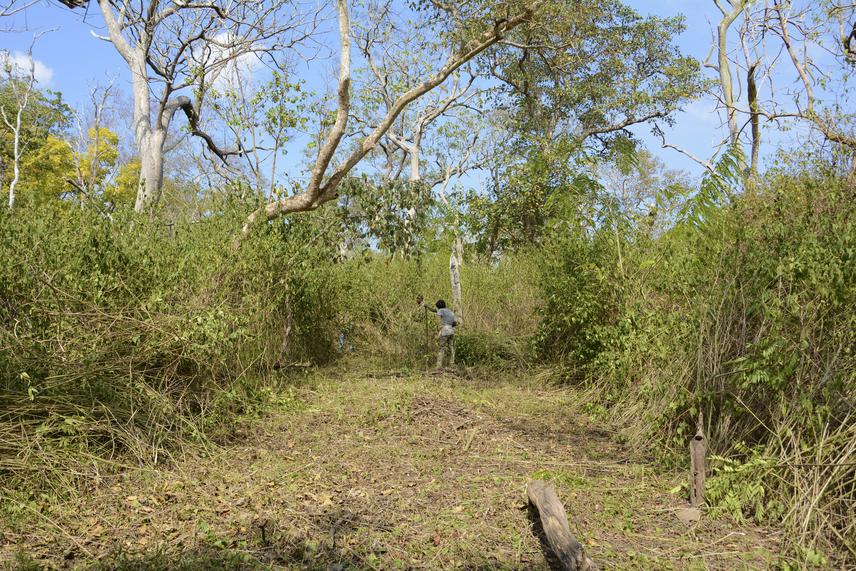Ayesha Prasad
Other projects
9 Feb 2007
Impact of Lantana camara, a Major Invasive Plant, on Wildlife Habitat in Bandipur Tiger Reserve, Southern India
This project aims to
(a) monitor forest recovery following the experimental uprooting of the invasive shrub, Lantana camara, and
(b) process and transport the uprooted Lantana to a nearby village for conversion into fuel briquettes for the indigenous community.

Firebreak being cleared around one of the Restoration plots overgrown by Lantana after 12 months of no weeding.
The Neotropical shrub, Lantana camara (hereafter Lantana), abundant and widespread in southern Indian tropical dry forests, has been shown to have diverse negative impacts on native plant communities. These impacts include changes in understory community composition, near extirpation of native grasses, as well as decreased tree generation, and compromise the potential of invaded forests to harbour wildlife. The long-term survival of these habitats demands the removal of Lantana in order to facilitate the recovery of native plants, and thereby the food base for large mammals.
In this project we will be monitoring the recovery of native plants following the uprooting of Lantana from 1-ha plots in areas heavily invaded by it (> 3 kg/m2 dry above-ground biomass). Using a set of nested quadrats within each plot we will compare various aspects of native vegetation including tree seedling and sapling density and height, herb and shrub abundance, grass recovery, secondary invasion by Lantana and other exotic invasive plants, as well as tree growth (using dendrometer bands). We will compare these data from restored plots with those from plots where Lantana was not removed as well as plots where there was no Lantana invasion in order to:
(a) understand patterns of post-restoration community re-assembly,
(b) long-term forest dynamics including carbon storage in the presence and absence of woody invasive species.
One hectare of heavily-invaded forest typically yields over 30 metric tonnes of dry Lantana. This large quantity of inflammable woody biomass needs to be removed from restoration sites if native plants are to have the light and space they need to recover. Therefore, this project will also include the first step in converting this ‘waste’ Lantana into fuel for domestic use in indigenous villages – shredding dried uprooted Lantana on site, and transporting it to a nearby village where the establishment of a bio-briquetting operation is imminent.
Working in close collaboration with forest management officials and with the assistance and traditional knowledge of local indigenous youth we have initiated what could potentially be a multi-year project but promises to reveal interesting and important results within the next 2-3 years. We will use the data generated from this project to draft policy and protocols for the restoration and conservation of forests threatened by Lantana invasion. Long-term forest change data will also be invaluable in our understanding of the dynamics and carbon-storage potential of tropical dry forests.